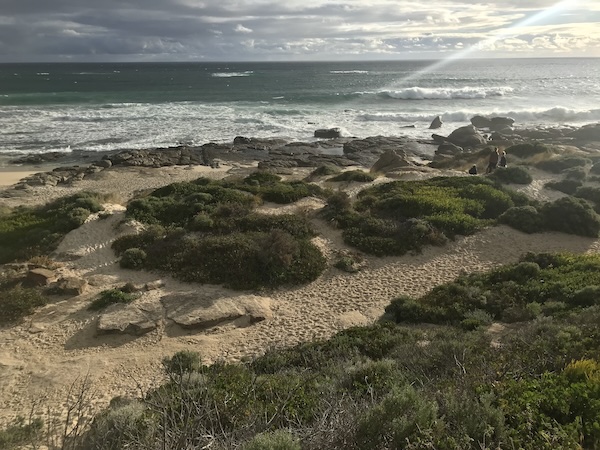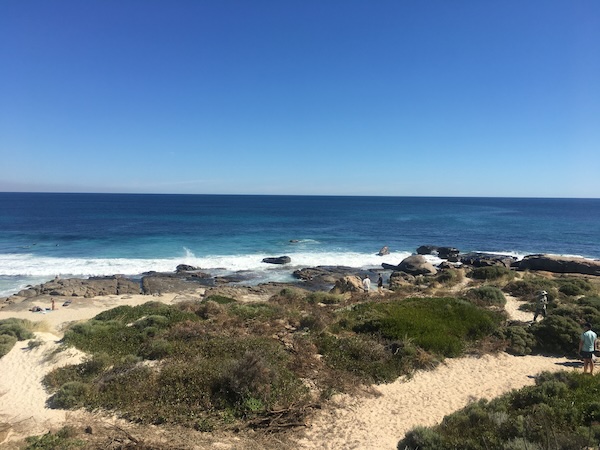These before and after shots show how Gas Bay has got its mojo back, says Nature Conservation Margaret River Region.
Gas Bay is well known for its pumping beach-break waves and sweeping coastline looking south towards Boodjidup, and Gas Point is the perfect spot to check the surf down the beach. But without a formal lookout, the fragile dune vegetation has been lost over time as beachgoers seek the perfect vantage point or the best way to get down to the beach.
“The point was criss-crossed with a myriad of trails, resulting in the loss of native vegetation,” says Nature Conservation’s Mandy Polley, who coordinates the group’s Caring for Coast program. “The good news is we’ve been working at Gas Bay point over the past three years to rehabilitate these areas of degradation. The beauty of the project is in its simplicity – closing excess trails with brushing and replanting with native pigface.”

Ms Polley described the revegetation project, which was completed through a series of community volunteer planting and brushing days, as an “awesome success story” and a “great example of a successful collaboration with a whole range of groups including the Shire of Augusta Margaret River, Margaret River Coastal Residents Association, Surfing Western Australia as well as Cowaramup Bay Boardriders and Busselton Senior High School”.
The stretch the coast has also been the focus of a World Surf League coastal conservation busy bee for three years running with the world’s best surfers during the Margaret River Pro. “Seeing diverse groups of people come together to help protect our beautiful coastline, and really enjoy themselves doing it, is always such a buzz,” she says.
Ms Polley said beachgoers have respected the fact many paths had been consolidated into one key access path. Meanwhile, she said the brushing is intact and working beautifully to allow the planted pigface to grow, and other native plants are naturally starting to regenerate.
“We might not always realise it, but coastal dunes are a really important buffer against wind erosion, waves and tides. They’re also essential for replenishing the beach after erosion events,” she said. “And the plants that grow on dunes provide food and nesting areas for shorebirds and other wildlife. When these plants are trampled and lost, dunes can disappear and that leads to erosion and even damage to infrastructure and properties.”
Genny Broadhurst from the Margaret River Coastal Residents Association says the work at Gas Bay is a good example of her group’s efforts to increase and maintain coastal habitat for endemic fauna and flora along the entire length of coast at Prevelly.
Meanwhile, Casey Woodwards, from beach clean-up group Tangaroa Blue, said locals working together on their stretch of coast was a way to take positive action in the face of “global environmental issues like climate change, erosion control and plastics impacting on our marine environment”.
Nature Conservation Margaret River Region general manager Drew McKenzie said, with growing population and visitation to the region, it was more important than event that locals were ambassadors and stewards for our coast. He said keeping off dunes, sticking to formal pathways, removing dog pool and rubbish, volunteering at conservation events, and learning to identify weeds were all ways to care for our coast.
“The coast is a great source of fun and recreation for many of us, but our goal is to inspire locals to be custodians and stewards for the coast too,” he said. “Increasing use of the coast by the growing number of residents and tourists, together with other threats like climate change, are putting pressure on the fragile coastal region.”
Nature Conservation’s Caring for Coast program is funded through the Line in the Sand philanthropic group and the Shire of Augusta Margaret River’s Environmental Management Fund.

